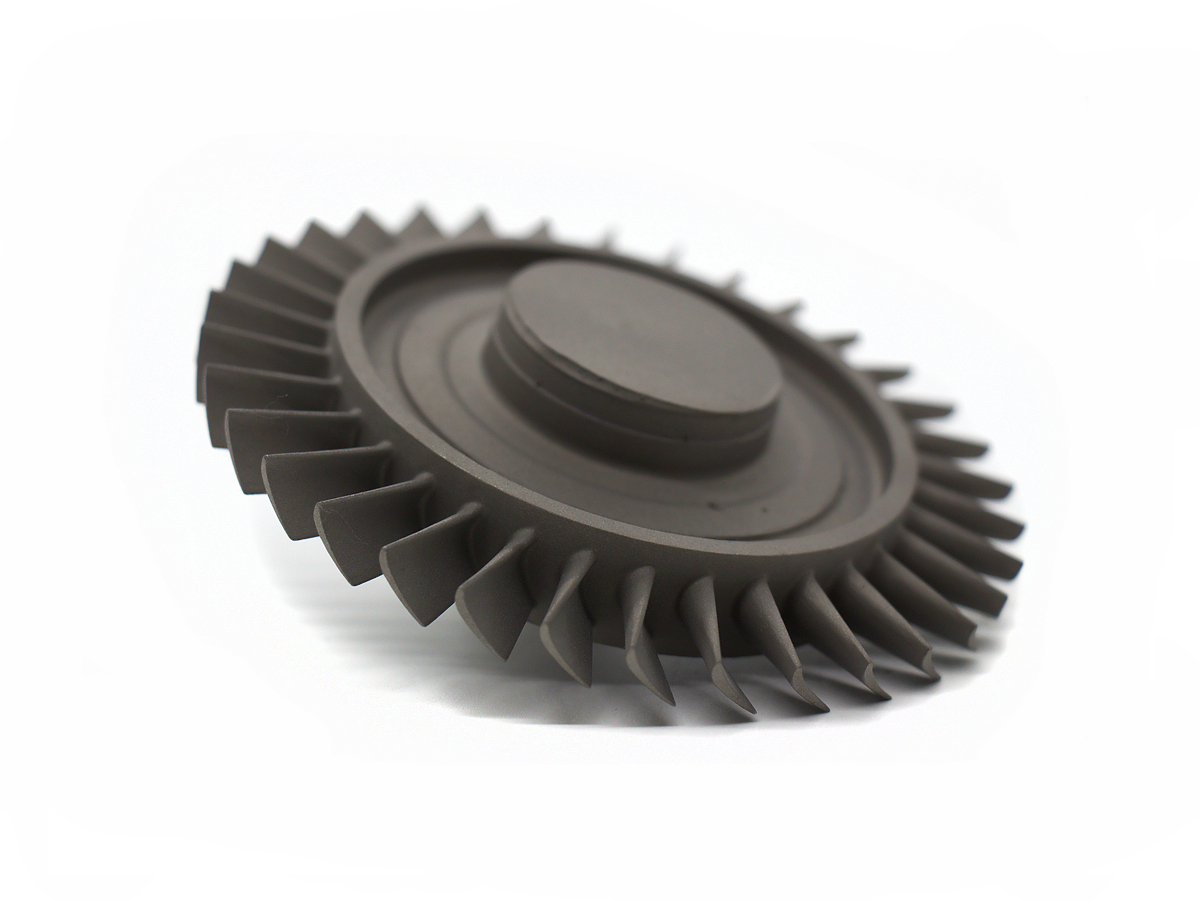Durable CNC Machined Parts for Critical Nuclear Industry Applications
Introduction to CNC Machining for the Nuclear Industry
In the nuclear industry, the reliability and durability of critical components are essential for maintaining operational safety, efficiency, and regulatory compliance. Durable CNC machined parts such as reactor vessel internals, control rod assemblies, precision valves, and heat exchanger components must endure extreme conditions, including high radiation exposure, temperatures up to 900°C, and corrosive environments. Advanced CNC machining provides tight tolerances (up to ±0.003 mm) and excellent surface finishes necessary for producing these critical parts in the nuclear, power generation, and industrial equipment sectors.
Utilizing precision CNC machining solutions, manufacturers ensure that nuclear components meet stringent industry standards, enhancing their durability, performance, and longevity under demanding operational conditions.
Material Comparison for Durable CNC Machined Nuclear Parts
Material Performance Comparison
Material | Tensile Strength (MPa) | Radiation Resistance | Corrosion Resistance | Typical Applications | Advantage |
|---|---|---|---|---|---|
880-1035 | Excellent | Exceptional | Reactor internals, heat exchangers | Superior corrosion and temperature resistance | |
485-620 | Good | Excellent | Cooling systems, reactor piping | Reliable corrosion resistance, good weldability | |
550-700 | Exceptional | Outstanding | Fuel cladding, reactor core elements | Excellent neutron transparency, superior corrosion resistance | |
790-900 | Excellent | Exceptional | Valves, chemical handling systems | Outstanding corrosion and chemical resistance |
Material Selection Strategy for CNC Machined Nuclear Parts
Selecting the right materials for nuclear industry applications involves evaluating durability under radiation, thermal performance, corrosion resistance, and mechanical robustness:
Reactor internals and heat exchanger components exposed to severe radiation and high temperatures (up to 850°C) significantly benefit from Inconel 625, known for its outstanding corrosion resistance and high-temperature durability.
Cooling systems, piping, and moderate-temperature components requiring excellent weldability and reliable corrosion resistance frequently utilize Stainless Steel SUS316L, offering practical and cost-effective performance.
Fuel cladding and reactor cores requiring superior neutron transparency and exceptional corrosion resistance select Zirconium alloys, ensuring enhanced reactor safety and efficiency.
Components such as chemical processing systems and critical valves in aggressive environments benefit from Hastelloy C-276, delivering unmatched corrosion resistance and chemical stability.
CNC Machining Process Analysis for Durable Nuclear Components
CNC Machining Processes Performance Comparison
CNC Machining Technology | Dimensional Accuracy (mm) | Surface Roughness (Ra μm) | Typical Applications | Key Advantages |
|---|---|---|---|---|
±0.003-0.01 | 0.2-0.5 | Reactor components, heat exchanger parts | High accuracy, intricate shapes | |
±0.005-0.01 | 0.4-1.2 | Cylindrical reactor elements, fuel rods | Efficient processing, excellent precision | |
±0.002-0.005 | 0.1-0.4 | Precision assemblies, control rod mechanisms | Precise machining without mechanical stress | |
±0.002-0.005 | 0.05-0.2 | High-precision sealing surfaces, bearings | Exceptional surface finishes, tight tolerances |
CNC Machining Process Selection Strategy for Durable Nuclear Components
Selecting appropriate CNC machining methods for nuclear components requires considering part complexity, dimensional accuracy, surface quality, and operational demands:
Complex reactor internals, heat exchanger components, and parts with intricate geometries needing precise tolerances (±0.003-0.01 mm) significantly benefit from Multi-Axis CNC Milling, achieving superior accuracy and consistency.
Cylindrical reactor elements, fuel rods, and structural components requiring reliable accuracy (±0.005-0.01 mm) efficiently utilize CNC Turning, providing excellent dimensional control.
Precision control rod mechanisms and assemblies needing intricate internal geometries and ultra-tight tolerances (±0.002-0.005 mm) utilize EDM machining, ensuring precise, stress-free fabrication.
High-precision sealing surfaces, bearing elements, and critical mating parts demanding exceptional finishes (Ra ≤0.2 μm) and extreme accuracy (±0.002-0.005 mm) rely on CNC Grinding, enhancing operational reliability and safety.
Surface Treatment Solutions for Durable CNC Machined Nuclear Components
Surface Treatment Performance Comparison
Treatment Method | Radiation Resistance | Corrosion Resistance | Max Operating Temp (°C) | Typical Applications | Key Features |
|---|---|---|---|---|---|
Excellent | Excellent (~1200 hrs ASTM B117) | 350 | Reactor internals, cooling systems | Smooth surface, reduced contamination risk | |
Good | Excellent (~1000 hrs ASTM B117) | 300 | Stainless steel components, reactor supports | Enhanced corrosion resistance, surface purity | |
Excellent | Outstanding (~1500 hrs ASTM B117) | 500 | Critical valves, moving components | High wear resistance, extended durability | |
Excellent | Excellent (~1200 hrs ASTM B117) | 550 | High-wear components, bearings | Increased hardness, fatigue resistance |
Surface Treatment Selection Strategy for CNC Machined Nuclear Components
Choosing suitable surface treatments for nuclear industry parts improves corrosion resistance, radiation stability, and component durability:
Reactor internals and cooling system components significantly benefit from electropolishing, which ensures contamination resistance, smooth finishes, and enhanced corrosion protection.
Stainless steel piping and structural supports often use Passivation, providing improved corrosion resistance and surface purity essential for safe reactor operations.
Critical moving assemblies and precision valves utilize PVD coatings to enhance durability, significantly improving corrosion and wear resistance.
Components subject to continuous friction and stress, such as bearings and reactor valves, benefit from Nitriding, which increases surface hardness, wear resistance, and component longevity.
Quality Control Standards for Durable CNC Machined Nuclear Parts
Quality Control Procedures
Dimensional inspections with Coordinate Measuring Machines (CMM) and precision optical measurement systems.
Surface roughness and integrity assessments using advanced profilometers.
Mechanical testing (tensile, hardness, fracture toughness) adhering to ASTM, ISO, and ASME nuclear standards.
Radiation resistance and corrosion testing under simulated nuclear operational conditions.
Non-destructive testing (ultrasonic, radiographic, eddy-current) ensures defect-free, structurally sound components.
Comprehensive traceability documentation iscompliant with ISO 9001, ASME NQA-1, and regulatory guidelines.
Industry Applications of Durable CNC Machined Nuclear Components
Typical Applications
Reactor vessel internals and structural supports.
Control rod mechanisms and assemblies.
Precision valves and emergency cooling system components.
Heat exchanger components and reactor coolant piping.
Related FAQs:
Why is CNC machining crucial for nuclear industry applications?
What are the best materials for durable CNC machined nuclear components?
Which CNC machining processes provide maximum precision for nuclear parts?
How do surface treatments enhance durability in nuclear components?
What quality standards govern CNC machined parts for nuclear applications?

